Linerless is more: embracing a linerless label future
From reducing waste and environmental impact to streamlining labeling processes, linerless labels are reshaping the landscape of packaging and labeling.
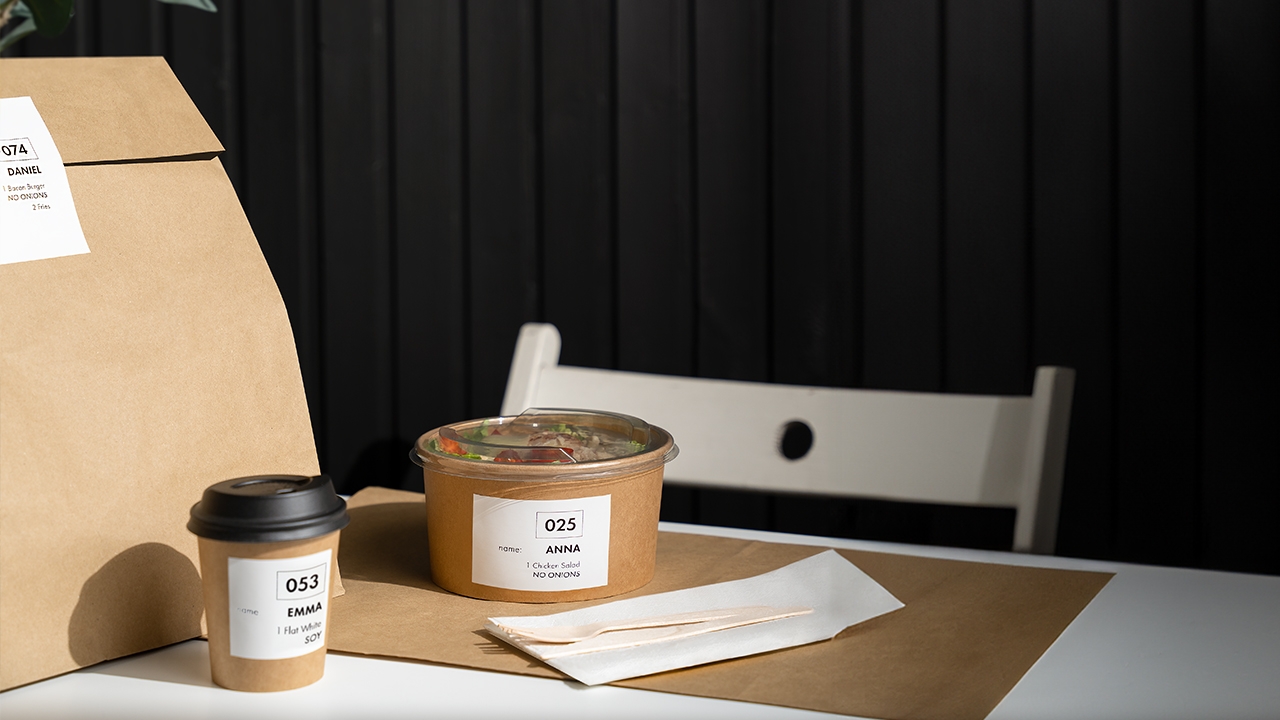
In a 2020 article for Labels & Labeling, Mike Fairley reported some stark figures: less than five percent of the 60 billion square meters of global production of laminates with silicone liners were being reused or recycled. Additionally, label converters typically waste five to 10 percent of the original laminate during production and handling.
Further, in some countries, the silicone liner is already being taxed as packaging material and it is becoming ever more complicated and costly to dispose of after usage.
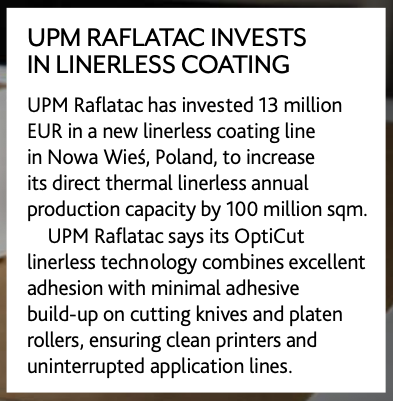 The rising concern about liner waste has driven the development and adoption of linerless labels, particularly in the logistics and retail sectors. Wayne Middleton, senior linerless segment lead at Avery Dennison’s Label and Packaging Materials EMENA, says: ‘Growth rates for linerless labels are increasingly well into double figures as we look forward, driven by greater awareness of the need to improve the sustainability of the industry and with on-going technical advancements. As the number and type of applications increase, the experience level grows, bringing new levels of innovation and capability. Demand will increase, driving us to a linerless future.’
The rising concern about liner waste has driven the development and adoption of linerless labels, particularly in the logistics and retail sectors. Wayne Middleton, senior linerless segment lead at Avery Dennison’s Label and Packaging Materials EMENA, says: ‘Growth rates for linerless labels are increasingly well into double figures as we look forward, driven by greater awareness of the need to improve the sustainability of the industry and with on-going technical advancements. As the number and type of applications increase, the experience level grows, bringing new levels of innovation and capability. Demand will increase, driving us to a linerless future.’
In its latest Awareness Report, global consultancy Alexander Watson Associates (AWA) forecasts an 18.4 percent CAGR growth for linerless labels between 2022 and 2025.
Linerless advantage
Traditional self-adhesive labels come with a backing material known as a release liner, which is discarded after the label is applied to a product or package. Eradicating the backing, which typically ends up as landfill waste, is an immediate win.
‘Linerless labels also eliminate approximately one-third of material use, generate less waste, increase uptime and reduce the need for roll changes,’ says Andoni Rodriguez, business segment director of logistics, retail, office and linerless at UPM Raflatac. ‘Linerless labels can be cut to any length, lowering material costs by reducing the need to stock a variety of label materials, thus consolidating stock-keeping units.’
“GROWTH RATES FOR LINERLESS LABELS ARE INCREASINGLY WELL INTO DOUBLE FIGURES, DRIVEN BY GREATER AWARENESS OF THE NEED TO IMPROVE THE SUSTAINABILITY OF THE INDUSTRY AND WITH ONGOING TECHNICAL ADVANCEMENTS”
Adds Jay Kim, managing director, Bixolon Europe: ‘Essentially, the printer cuts the label to the length required based on the amount of print – so a label for a coffee cup, for example, will be smaller than one for complex, multi-item food delivery order. The result is optimized use of label rolls, with minimal waste.’
Middleton adds that there is also the potential for elimination of the waste matrix produced when die-cutting labels, along with waste reduction by diverting liner from landfills or incineration.
‘The reduction in materials needed to supply the same number of labels can be significant,’ says Kim. ‘This directly relates to a reduction in carbon footprint and water usage. Coupled with the ability to introduce recycled content into the label face materials and industry-wide initiatives such as liner collection schemes for recycling, there are several layers of sustainability improvement - reduce, reuse and recycle.’
Beontag’s variable information printing (VIP) linerless label has demonstrated a 35 percent lower carbon footprint and a 33 percent reduction in water consumption compared to a product with the liner in the same application, with benefits at every stage of its life cycle.
Barbara Dunin, director of marketing and ESG at Beontag, states: ‘By eliminating the need for a liner, it achieves a significant
38 percent reduction in post-consumer waste during the end-of-life phase, based on the weight of post-consumer waste per square meter. Furthermore, this can aid in complying with environmental directives and support waste-reduction efforts.’
The benefits of Beontag’s linerless labels are measured from a cradle-to-grave comparative Life Cycle Assessment (LCA) adhered to ISO 14040 and ISO 14044 standards and certified through a rigorous third-party verification for the Type III Environmental Product Declaration (EPD) issued in compliance with ISO 14025.
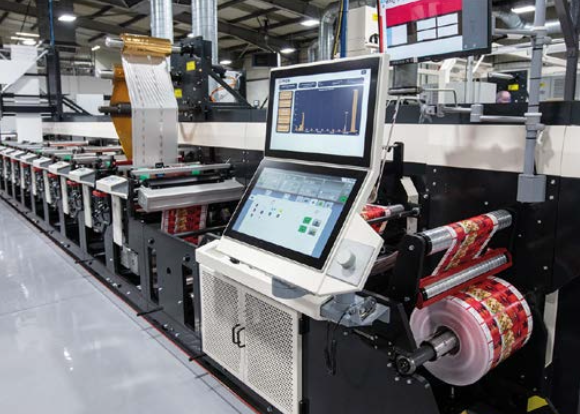
ETI has a long history of building machines that allow converters to manufacture linerless labels in-house. Maxime Bayzelon, president at ETI, says in-house production can enhance the sustainability profile of linerless labels.
‘When a label printer/converter manufactures linerless labels from A to
Z, that is, by coating in-house, the inline manufacturing process plays a pivotal
role in minimizing material usage,’ states Bayzelon. ‘The printer/converter will carefully choose the raw materials (paper or film, silicone and adhesive), selecting those that meet the specific needs of its client and the final end-use application.
For example, if a specific coating weight of adhesive is sufficient for an application, we will not use/consume more than necessary.
‘The essence lies in crafting precise formulations tailored for each specific application, resulting in optimal performance and quality. This approach also ensures that we use exactly what is needed, preventing unnecessary waste.’
Industrial and retail applications
Mobile linerless printers are being used by progressive retailers to enable shop floor staff to take label printers with them to shelves or products that need pricing or label updates.
‘This option is also more eco-friendly as backings often take up more space on reels and also generally require their own bins in order to be recycled,’ says Bixolon’s Kim.
In warehouses, label printing stations are typically tied to strategic locations. This setup, while effective, creates operational processes centered around the printer’s location. Staff often bring parcels to printing stations, where labels with backing liners are printed and applied to goods. Disposing of these liners becomes an additional challenge, requiring proper disposal in extra bins. These bins take up space and liners can end up on the floor by accident, causing health and safety slip hazards. This becomes important to review across the supply chain, too.
“THE RAPID GROWTH IN FOOD TRAY APPLICATIONS AND E-COMMERCE/LOGISTICS LABELS HAS FUELED MUCH GREATER INTEREST AND FURTHER TECHNOLOGICAL ADVANCEMENTS”
‘Especially when you consider some e-commerce retailers are shipping hundreds or thousands of goods daily, and many last mile delivery and shipping operators – like DHL, UPS and FedEx – are responsible for managing and delivering even higher volumes of goods than that,’ Kim states.
Shelf label is another scenario within warehouses and fulfillment centers ripe for improvement. Labels on shelves need to be changed quickly within warehouses. Through peak or any important seasonal period label changes might happen more frequently as products move around the warehouse or if a label codes or pricing changes. Traditionally, staff would have printed labels at a stationary printing station and then would walk to each appropriate shelf and change the label – a time-consuming process. They’d have to first print the labels, then change them and then dispose of the liners. Again, more waste containers are needed, and liners can end up on the floor. This is a clear use case for mobile linerless printers.
In an example of how powerful mobile linerless technology can be, Galeries Lafayette in France recently launched an in-store ‘click and collect’ service that uses Bixolon linerless mobile receipt printers, scanners and networking software to identify products for later customer pick-up. The retailer rolled out the e-reservation and ‘click and collect’ service across its entire Galeries Lafayette and BHV Marais network of 60 stores in one month.
‘As we continue to develop and bring in new innovative linerless products, we are seeing a shift in not just linerless technology requirements, but also the connectivity required within the printers with a growing demand for Wi-Fi options across our mobile and stationary linerless ranges,’ Kim explains.
Adds UPM’s Rodriguez, ‘The collaborative development of printers and materials is fostering efficiency, waste reduction and sustainability, collectively delivering enhanced value for end users.’
Point of sale applications
An average consumer will encounter linerless labels at many points in daily life. The most common linerless point-of-sale applications today are in fast food restaurants, and these are increasing at an exponential rate according to UPM’s Rodriguez: ‘Linerless labels are versatile, as they function in a similar way to a receipt, however, their length can vary based on the consumer’s order. In addition, linerless printers are easy to operate and due to their compact size, they fit easily in the kitchen, while also playing a significant role in digitalized smart kitchen concepts.’
Another very common place for the use of direct thermal linerless printing is in supermarkets and grocery stores where it is used alongside weighing scales in deli, meat and produce departments.
These labels are also ideal for industrial food packaging applications and for labeling product packaging with ingredients and other required nutritional or other information, such as alternative language versions. While the amount and content of the information may vary between packages, the label roll itself stays the same, enabling efficiency gains to be made on packaging lines by avoiding the need for reel changes alongside material usage savings.
Bixolon’s Kim says that over the past 10 years mobile linerless label and receipt printers have increasingly played a powerful supporting role in retail, restaurant and food and beverage scenarios. These printers can be integrated into existing business processes, alongside compatible software and mobile devices.
“WE ARE SEEING A SHIFT IN LINERLESS TECHNOLOGY REQUIREMENTS, AND THE CONNECTIVITY REQUIRED WITHIN THE PRINTERS WITH A GROWING DEMAND FOR WI-FI OPTIONS ACROSS OUR MOBILE AND STATIONARY LINERLESS RANGES”
‘For example, in retail, POS is combined with label printers to print labels and communicate prices clearly to customers,’ says Kim. ‘Receipts can be printed too from the same printers and serve as legal proof that goods or services have been purchased. This mobility is enabling the printing of receipts with linerless labels to take place at the point of sale or elsewhere where labels are needed.’
Avery Dennison’s Middleton points out that decorating linerless labels is very much an underexplored market opportunity for a wide range of market segments from wines and spirits, home and personal care to food and beverage.
‘Direct thermal labels can be pre-printed with colors or eye-catching elements, such as logos if the end user desires a more visually appealing or noticeable label. This flexibility allows for customization while maintaining variable information capability, comments Middleton.
Decorative linerless labels
While linerless labels are now well established in the industrial, warehousing, point of sale and retail environments, the technology has taken longer to establish itself in the prime label decoration market.
Ritrama, for example – now part of the Fedrigoni Group – launched its Core linerless technology over five years ago, and since there has only been one major adoption, by SAB Brewery.
The Core system requires a special converter unit, supplied by Omet, and a dedicated applicator supplied by Italian manufacturer Ilti. The label converter prints using its existing equipment, roll-to-roll, in the usual way, on a laminate with a special liner. The liner is converted to become the silicone layer over the print on the Omet converter.
Despite the many sustainability and process advantages laid out above, there still appears to be some reluctance of brands to adopt these kinds of decorative linerless systems.
There are some key issues for brand owners preventing the widespread adoption of decorative linerless labels.
Firstly, it requires a dedicated applicator, which means swapping out or running alongside well-established high-speed PS label applicator lines. Secondly, there are limitations on label shape – it can only be square or rectangular, which can be an issue for brands that rely on bespoke die-cut shapes.
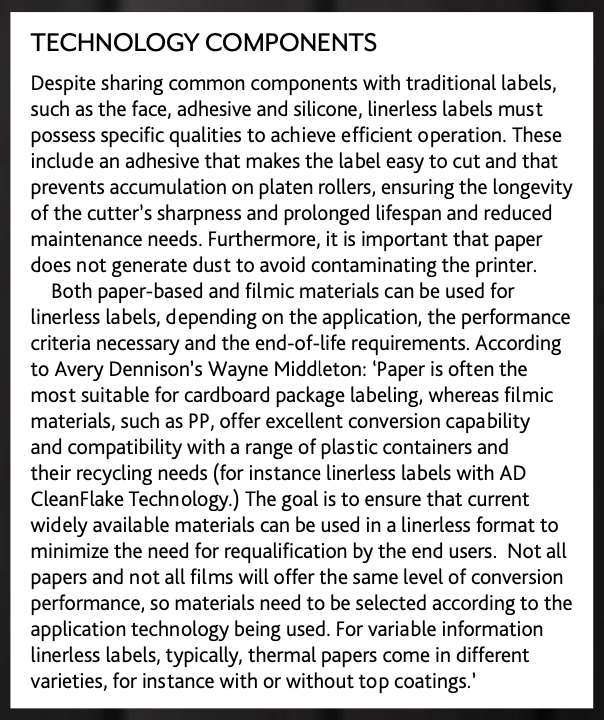
Additionally, linerless labels typically use release coatings which are applied over the print, and this may limit the degree of embellishment possible or the ability to apply secondary variable information by traditional means such as thermal transfer. Other techniques such as direct thermal or laser printing may provide a solution.
Avery Dennison is the latest company to enter the decorative linerless arena with a mission statement to finally make linerless work in the prime label market.
The company used Labelexpo Europe 2023 to launch its AD LinrSave technology, which is based on the Catchpoint IP developed by entrepreneur Mike Cooper.
Avery Dennison has been working with a range of suppliers to optimize each aspect of the technology including an inline silicone coating station that sits on any flexo press and the key micro- perforating technology which allows the label to easily and cleanly separate on the applicator.
For the label converter, the laminate is printed in the usual way, after which the liner is delaminated and the roll is silicone coated, perforated and slit. Avery Dennison then collects the liner from the converter as part of its standard logistics and recycling network. For the end user, the technology is totally linerless.
Avery Dennison is also working on developing kits that can convert a standard linered PS label applicator to a linerless applicator. Applicator trials are ongoing.
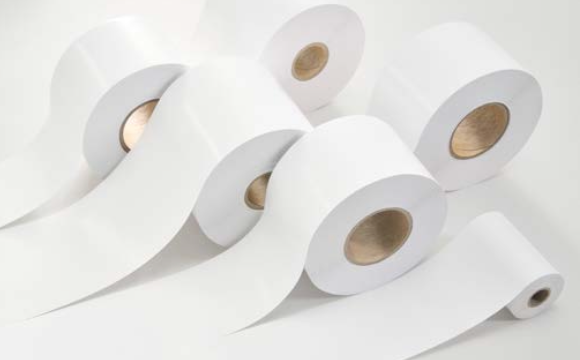
Comments Avery Dennison’s Wayne Middleton, ‘Linerless label technology has been around for a long time, however, the rapid growth in food tray applications and variable information printing for e-commerce/logistics labels over the last few years has fueled much greater interest and further technological advancements. New developments in decorative linerless conversion and application allow these benefits to be transferred to a wider range of market segments.
‘The ability to use existing converting equipment and modified applicators will further drive development. Avery Dennison sees linerless labeling as a key part of the future and is therefore a key strategic platform within the company. Variable information linerless was already part of our portfolio and we are rapidly adding decorative possibilities to the evolutionary journey.
We’ve also worked and done projects with suppliers of linerless labeling equipment and consumables, and we’ve had great success. By working in partnership, we can develop solutions that work for all stakeholders.’
Stay up to date
Subscribe to the free Label News newsletter and receive the latest content every week. We'll never share your email address.



